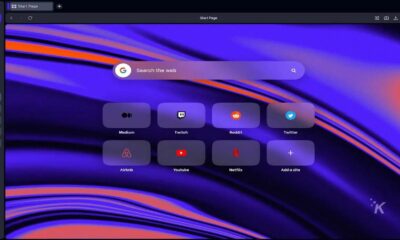

Internet
These websites let you browse Reddit at work while looking productive
Reddit has become a popular site to kill time at work, and these reskinned versions allow you to browse Reddit discreetly while maintaining a professional appearance.
-


Internet
/ 1 year agoHow reliable is T-Mobile Home Internet?
Discover the pros and cons of T-Mobile Home Internet. Is it a good deal or a potential headache? Read on to...
-


Internet
/ 1 year agoHow T-Mobile’s Home Internet data cap stacks up against other ISPs
T-Mobile joins Comcast and AT&T in implementing soft data caps on home internet plans, slowing speeds after a usage threshold.
-


Internet
/ 1 year agoT-Mobile introduces soft data cap for Home internet users
T-Mobile is notifying its Home Internet customers about a new soft data cap that could see lower connection speeds based on...
-


Business
/ 1 year agoHow to schedule an email in Gmail and Outlook
Don't want to respond to an email at 3am? Schedule it for a more appropriate time.
-


Internet
/ 1 year agoGoogle’s search algorithm sees deepfake porn as helpful content
More needs to be done to combat the prevalence and discoverability of deepfake pornography
-


FAQs
/ 1 year agoWhat is deepfake porn?
Your face could potentially be manipulated into deepfake pornography with just a few clicks.
-


Google
/ 2 years agoGoogle to settle Chrome Incognito Mode lawsuit — will you get paid?
The lawsuit was over how the Chrome browser handles data in Incognito mode.
-


How-To
/ 2 years agoWhat do Wi-Fi numbers actually mean?
What do the Wi-Fi numbers on routers mean for your home network?
-


Internet
/ 2 years agoNorton steps up to the plate and introduces secure web browser
The Norton Secure Browser is free and works with Windows 10 and 11, as well as macOS Catalina, Big Sur, and...
-


How-To
/ 2 years agoHow to delete a PayPal account
If you’re ready to cut ties, here’s how to delete your PayPal account.
-


AI
/ 2 years agoOpera’s new AI browser, Opera One, makes you feel like Tony Stark
I downloaded the Opera One browser to try it out – it's not perfect. But it isn't terrible.
-


AI
/ 2 years agoThe best AI website builders (2024)
In this article, we'll discuss some of these tools and how you can build simple, no-code websites for personal or business...
-


Google
/ 2 years agoGoogle Photos for web gets some much-need editing tools
A Google One membership is required though.
-


AI
/ 2 years agoOpera adds ChatGPT-powered AI panel in its newest browser
The Opera AI browser is available for both desktop and mobile platforms.
-


Google
/ 2 years agoGoogle will finally correct your URL typos in Chrome
Google is introducing new features that will ensure Chrome will remain freely accessible.
-


Internet
/ 2 years agoOnline predators are stalking children’s webcams, study reveals
Here are some recommendations to help keep your kid safe while online and how to protect them from predators.
-


Apps
/ 2 years agoNotion AI is a digital sidekick that supercharges your productivity
Efficiency meet your new best friend: Notion AI elevates your note-taking to a whole new level.
-


Internet
/ 2 years agoDid the arrival of ChatGPT kill the metaverse?
Rumors are spreading faster than trending hashtags if Zuckerberg is sunsetting the metaverse entirely in light of the generative AI craze.
-


AI
/ 2 years agoYour voice can be cloned by anyone with an internet connection
Defend against the growing threat of voice deepfakes with this comprehensive guide on prevention, detection, and understanding their impact.











































